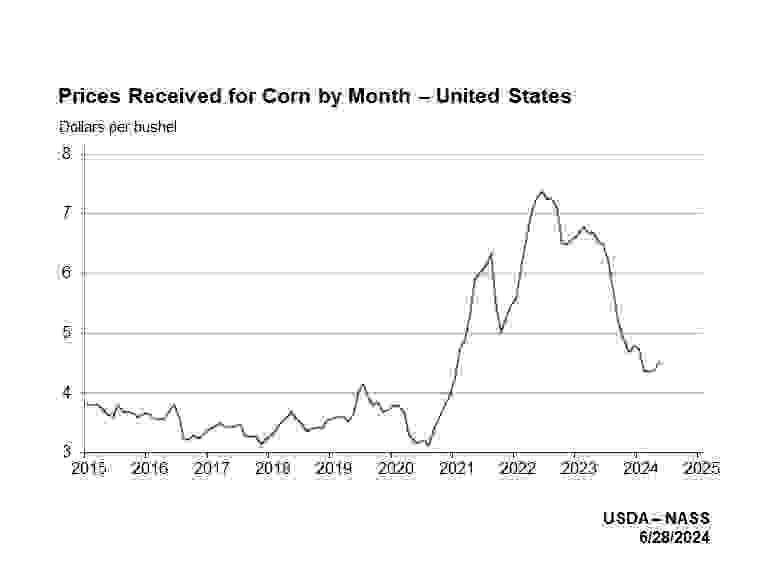By Clayton Baumgarth
Farmers in Indiana, such as Dwight Ludwig, often work with the state staple crops: corn and soybeans.
“We grow about 2,000 acres of each,” he said. “We do grow a little bit of wheat from time to time, we had just about a couple 100 acres of wheat out this year. And then we have a real small operation of some cows.”
It’s for good reason; the crops are easy to work with and they’re some of the most thoroughly researched and understood agricultural products out there. They also have many applications.
But corn and soybeans have had into some issues as of late. And farmers around the state are feeling the financial strain.
“Not only are we battling the low market prices, where we're selling our product for way less than what it takes to grow them, but we're also having to pay more on the other side to just to get the crop grown,” he said. “It's really been a challenge.”
The average selling price of corn and soybeans have hit a recent low. In 2022, corn sold for $7.20 per bushel and soybeans for $15.70 per bushel. This year, corn averaged $4.35 per bushel and soybeans $11.50 per bushel, according to the USDAs National Agricultural Statistics Service.
This, on top of already thin margins brought on by high input costs like pesticides and fungicide, have made it a challenge for farms to operate.
“With the market being where it is, you might put off any sort of capital improvements to your farm,” Ludwig said. We’ll kind of put a pause on anything like that, and really just basically try to survive and make it through until the market improves.”
Heavy rains and fair weather have had a somewhat negative effect this year as well. Moisture helps crops grow, but in high levels can bring some concerns.
“With moisture comes a lot of bacteria, fungus, insects, things like that,” he said. “So not only are we struggling to break even, but you’ve got to throw more at it, more inputs at it, just to get the crop to where it needs to be so you can harvest it.”
Last year, farmers contended with the exact opposite problem. Widespread drought conditions led to more breakage in the crop, but according to Todd Davis, the Indiana Farm Bureau’s Chief Economist, higher prices at around $6.80 per bushel of corn made it a profitable year for those with fields that survived the heat.
“About 60% of the corn and soybean area last year was impacted by drought,” he said. “This year, that same group pegged that at about 10%. Big difference.”

So, what can be done to help the ag economy? Officials and farmers like Dr. Dana Allen-Tully, the president of the Minnesota Corn Growers Association agree — Congress needs to pass a new Farm Bill.
“I think that the Farm Bill focuses on the farm and nutrition title, but in reality, the Farm Bill is really a rural community bill,” she said. “And so, there's a lot of titles in the Farm Bill that will help support our communities.”
The Farm Bill, which must be updated every five years, mainly serves as a food assistance bill for the majority of Americans.
Click here to see more...